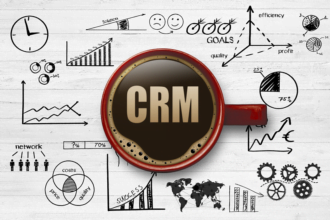Vertical integration is a critical principle used across industries to streamline processes. Though it was originally used primarily in manufacturing – the Ford Motor Company embraced the practice in the 1920s when they began making their own steel – today, the practice spans fields as diverse as agriculture, eyewear, entertainment, and technology. And, while some versions of vertical integration lead to harmful social losses in the form of anti-competitive practices, in the tech sector, many businesses look to vertical integration simply to streamline daily operations.
In tech settings, vertical integration may mean ensuring that software can smoothly merge data from the warehouse level through billing, CRM, and analytics. This kind of interoperability not only allows for streamlined operations, but ensures the minimum of errors through manual data transfers while also optimizing for speed.
The Full Software Stack
Within any company today, you’re likely to find a complex software stack. CRM software organizes client information, billing programs generate invoices, and predictive analytics software optimizes distribution chains, enabling just in time delivery and enhanced planning for a competitive edge. When there are a lot of programs in use, though, it compromises their ability to work together. That’s because some programs are designed to work together – they’re compatible, smoothly synchronizing information between platforms.
Other programs may as well work at cross-purposes. They make collaboration across tools, never mind across departments, nearly impossible. This may seem inconsequential when you consider the lack of coordination between platforms even a few years ago, but given how far analytics tools have come in that brief time, businesses can’t function with those types of data silos.
Big Picture Automation
Automating information sharing across departments and functions is valuable on its own, and sometimes it’s possible to share information across multiple software platforms. From the perspective of vertical integration, though, working with different programs is less than optimal. A better approach is to choose one program that can do it all, such as a professional services automation (PSA) platform.
PSA tools aren’t necessarily new – industry experts have been writing about them for nearly twenty years – but such platforms have become much more complex in the last few years. For example, Syncro’s PSA platform integrates billing, marketing, and reporting functions into one tool; it also includes a help desk function and asset management, which makes it stand out compared to other platforms. In this way, Syncro’s PSA platform epitomizes the concept of vertical integration for business in a way that discrete but compatible programs cannot.
Why All-In-One Solutions Matter
All-in-one software solutions that encourage vertical integration may be optimal, but for businesses that are already running separate, compatible programs, is such a transition really necessary? There are a number of factors to consider, but the general consensus is that the benefits outweigh the challenges of making such a switch, for several reasons, including:
- Cost: Running one platform that covers the full range of professional operations is almost always more affordable than running multiple systems. Especially given that the majority of business software is subscription based today, rather than run off of a proprietary license, changing platforms is less likely to be associated with a significant increase in costs. The only change is what software your company is paying to subscribe to.
- Limited Downtime: Yes, you’re likely to have some downtime when transitioning between one software system and the other, but this is a one-time situation. Meanwhile, when running multiple platforms, you run the risk of frequent downtime incidents while the separate companies run updates or perform system maintenance.
- Streamlined Finances: When your business transitions from multiple platforms to just one integrated system, billing is also simplified between CRM, accounting, and other critical tools that are all under one roof. Given the existing challenges associated with SMB payment technology, most find it beneficial to shift to a system that easily integrates orders, invoices, and payment processing. Forget all those paper invoices and lost checks and make the move to an all-digital, all-in-one system.
- AI Advantages: The growth of AI capabilities may be the most important reason for businesses to make the transition from distinct programs to a vertically integrated software system. When AI has access to the full extent of a business’s data, they can use that information to predict cash-flow events over the long-term, improve financial stability. Other applications of AI in vertically integrated ecosystems include predicting supply chain needs, as noted above, as well as improving workflow organization, improving resource utilization, and reducing costs across departments.
Vertical integration gives your business the big picture and when it comes to software, seeking an all-in-one solution isn’t an anti-competitive trust issue. Rather, it’s all about internal efficiency and the ability to visualize what’s next for your business. As more businesses recognize the challenge of managing data across multiple software systems and as AI capabilities continue to advance, the demand for vertically integrated software systems will continue to escalate. The advantages are just too substantial to ignore.









